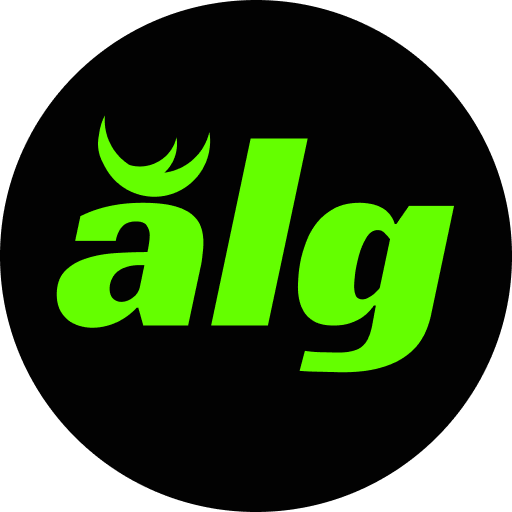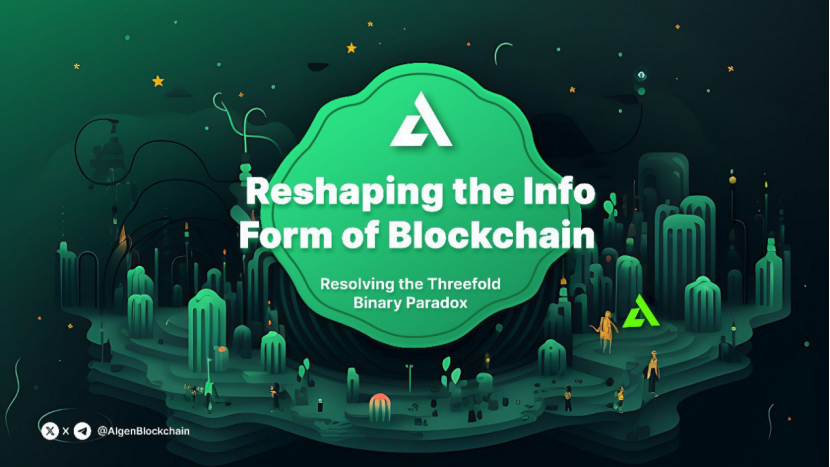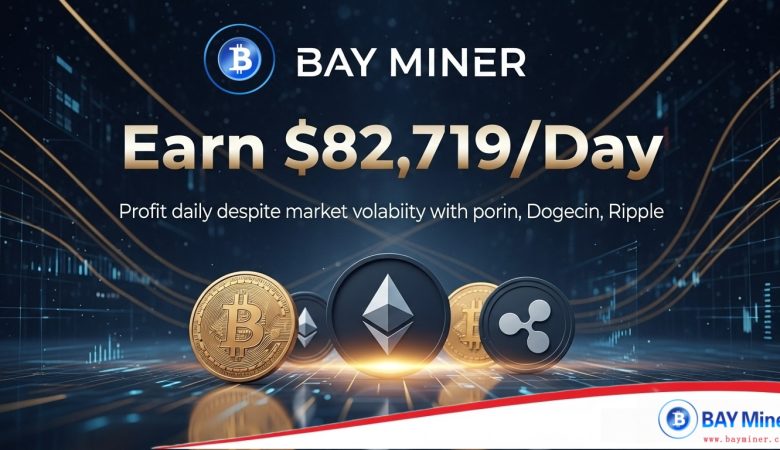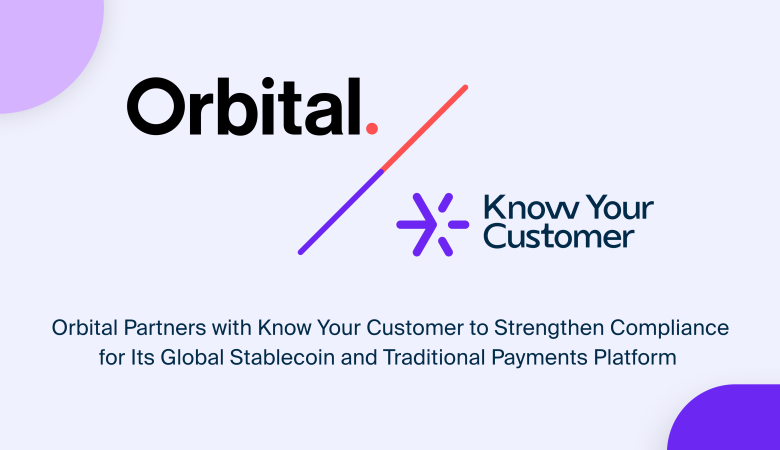In recent years, although the fervor around blockchain has waned, the emergence of new concepts and the approval of BTC ETFs are gradually bringing blockchain back into the public eye, presenting new development opportunities. Currently, the competition in the public chain market is fierce. Established projects like Bitcoin, Ethereum, and EOS, as well as emerging high-performance public chains and Layer 2 scaling solutions, are all striving to attract users and developers. However, they still face challenges related to consensus mechanisms, privacy protection, performance, and cross-chain compatibility.
Against this backdrop, the Algen Hyper Application Blockchain has emerged, offering an open and flexible development platform designed to address the existing public chains’ deficiencies in scalability and interoperability. The Algen Hyper Application Blockchain provides developers with a new DApp development environment through its advanced technology and comprehensive ecosystem. It meets the market’s demands for cross-chain compatibility, security, and high performance, injecting new vitality into the Web3 ecosystem and public chain projects, and laying a solid technological foundation for the new era of blockchain.
Ted Nelson and the Xanadu Project
In 1965, Ted Nelson proposed the Xanadu project, envisioning a decentralized network with advanced information management capabilities, which anticipated the widespread adoption of personal computers. However, due to technological limitations at the time, Xanadu was unable to realize its grand vision.
Today, with the development of blockchain and artificial intelligence technologies, we have the opportunity to revisit and fulfill Xanadu’s vision. Algen Blockchain is based on this vision and is committed to combining Xanadu’s core principles with contemporary technology to create a decentralized and information-rich network environment. By integrating artificial intelligence, Algen Blockchain aims to address some of the key challenges faced by blockchain technology, such as consensus mechanisms, system efficiency, and trust issues. This not only enhances the performance of the blockchain but also strengthens trust among users, allowing Xanadu’s original dream to continue and flourish in the digital age.
Challenges Confronting Blockchain and Web3.
As a foundational technology for building decentralized applications, blockchain offers vast potential but faces several concrete challenges in practice:
- Scalability: With the growth of blockchain applications, existing networks often struggle to handle large transaction volumes, leading to network congestion and rising fees. This is a significant barrier, particularly for users who rely on high-frequency transactions.
- Governance: Decentralized governance models are theoretically resistant to censorship and single points of failure but face slow decision-making and inefficiency in practice. Additionally, the concentration of governance tokens can centralize power, undermining decentralization.
- Cross-Chain Interoperability: Limited interoperability between different blockchain platforms restricts the free flow of assets and data, hindering broader adoption of blockchain technology.
- Data Availability: Ensuring data integrity and availability in decentralized networks is challenging, particularly when facing network partitions or data loss.
Current solutions struggle to balance decentralization and efficiency:
– Decentralization: To maintain network security and censorship resistance, decentralized networks often sacrifice efficiency. Fully decentralized systems typically lack the speed and performance of centralized solutions, reducing user experience.
– Efficiency: Some blockchain projects adopt more centralized or semi-centralized governance and operations to improve efficiency, compromising the core advantage of decentralization.
Taking zero-knowledge proof (ZK) blockchains as an example, the fundamental bottlenecks in the paradox between consensus and efficiency are evident in several areas:
– Blockchain Framework Design Limits Scalability: Layer 1 (L1) frameworks have limited performance. Although block verification can significantly improve transactions per second (TPS), the block size limits the upper bound of this mechanism. Existing blockchain performance is insufficient for handling high-volume transactions and large-scale data, and long settlement periods are unacceptable in many applications.
– Verification Mechanism vs. Compatibility: The Ethereum Virtual Machine (EVM) wasn’t designed for zero-knowledge proof environments but instead for achieving all Ethereum functions. Its storage layout relies heavily on the Keccak hash ALGorithm and large Merkle Patricia trees, both of which are inefficient for zero-knowledge proofs and impose significant computational burdens. In zkEVMs, Keccak consumes a considerable amount of proof resources, increasing user costs. As a result, zkEVM compatibility with Ethereum lowers its performance. ZK blockchains must balance compatibility and efficiency, further limiting proof efficiency.
In the evolution of the ZK ecosystem, the paradox between consensus and efficiency still impacts development. Major public chains pursuing higher transactions per second (TPS) are “dancing with shackles,” unable to break free from decentralization constraints. A lack of compatibility reduces the user base, while a smaller user base makes it hard to sustain the system fully. Lower performance further hampers new user attraction, creating a vicious cycle that marginalizes many blockchains.
Introducing Algen Hyper Application Blockchain:
Algen Hyper Application Blockchain tackles current blockchain network challenges with a range of innovative solutions designed to balance decentralization and efficiency while advancing blockchain technology across broader application scenarios.
- ASDO (ALG Self-Determined Option): utilizing AI to dynamically optimize information flow based on real-time market analysis and user behavior predictions. This dynamic approach maintains the blockchain’s decentralization while enhancing network efficiency and performance. By employing cutting-edge models such as LLM, LSTM, and ARIMA, ASDO anticipates market trends and adjusts data processing strategies proactively, even in the face of regulatory shifts. It streamlines data management by directing high-value transactions through traditional Rollup or L1 pathways and application-specific data through L2 execution, thus preventing network congestion and safeguarding the integrity of blockchain information. ASDO’s self-regulation feature allows it to adapt to operational demands and user activity, maximizing resource utility and ensuring a consistently optimal Pareto efficiency. Furthermore, it empowers users with the flexibility to choose their data availability preference, be it on-chain or off-chain, all while ensuring a secure and efficient information processing experience. This commitment to adaptability, coupled with a robust, AI-driven infrastructure, positions Algen as a leader in providing a decentralized platform that is both fair and responsive to the evolving needs of its users.
- Data Availability (DA) Layer and Rollup Applications: By applying DA technology at the Layer 2 (L2) level, Algen blockchain introduces a new scaling solution. Transactions can be processed at the L2 level without storing all transaction data on Layer 1 (L1), significantly reducing costs and improving processing speeds. Additionally, Algen’s rollup applications ensure efficient data processing, offering seamless support for applications in ecosystems like social media and gaming that require substantial data handling.
- Cross-Chain Relay System: Algen blockchain has designed a cross-chain relay system using relay chain technology to facilitate interoperability between different blockchains. By deploying lightweight clients and state channels, Algen blockchain enables secure and efficient data and value transfer across different blockchains, breaking down blockchain barriers and promoting seamless asset and data flow, thus laying the foundation for an open blockchain ecosystem.
Algen Hyper Application Blockchain effectively addresses existing challenges in blockchain networks through its distinct technical features and solutions. By prioritizing both decentralization and efficiency, Algen enhances the current and future capabilities of blockchain technology. The goal is to develop a high-performance, secure, and interoperable blockchain ecosystem. This approach ensures a more robust and flexible user experience, facilitating a decentralized environment that supports transparency and user autonomy. With these advancements, Algen is positioned to adapt to evolving technological demands and broaden the utility of blockchain across various industries.
Application Scenarios and Ecosystem of Algen Hyper Application Blockchain
- DeFi and Cross-Chain Technology: By leveraging cross-chain and ASDO technology, Algen blockchain provides liquidity solutions that allow users to borrow and exchange assets across different blockchains while reducing transaction costs.
- Point Redemption: Algen DApp’s point system allows users to convert tokens into points to access a range of services, enhancing user engagement and platform stickiness.
- Games: Algen blockchain incentivizes users to participate in network validation through a gamification approach, boosting network stability and security while providing entertainment value.
- Blockchain Browser: Algen’s blockchain browser offers comprehensive services such as transaction queries, smart contracts, and market information, enriching user engagement and understanding of the network.
Advanced Architecture of Algen Hyper Application Blockchain
Algen’s architecture delivers flexible and efficient blockchain services across diverse sectors. In the DeFi space, it employs cross-chain and ASDO technologies to enhance asset liquidity and reduce transaction costs, facilitating smoother asset transfers. Its point redemption system boosts user engagement by allowing tokens to be converted into points, which diversifies services and reduces management overhead.
The introduction of gamification incentivizes user participation in node validation, enhancing network stability and security while making interactions more engaging. The Algen blockchain browser provides comprehensive tools such as transaction tracking, smart contract management, and market insights, enriching user engagement.
Information Ownership
Algen’s Voice DID system enhances data security and privacy by giving users full control over their personal information. This approach mitigates the risk of data breaches and identity theft and promotes transparency within the network. Users can engage in network activities without exposing sensitive information, thereby boosting both security and community involvement. Voice DID’s adaptability to sectors like finance, healthcare, and education aligns with global privacy regulations such as GDPR, broadening Algen’s market appeal.
Practical Applications
Algen enhances supply chain transparency with its end-to-end tracking capabilities, from production to consumption, and supports robust user interactions on social networks with high performance and strict data security. Its smart contract functionality streamlines legal processes and enforces contracts effectively, fostering innovations in legal technology and enhancing efficiency across various industries.
Building the Future
Algen Hyper Application Blockchain is dedicated to rebooting the Xanadu project by creating a revolutionary information ecosystem, advancing blockchain technology to the forefront. Its core vision is to build a decentralized world where users fully control their data and enjoy secure, efficient, and open network services. Through its innovative architecture and diverse application scenarios, Algen addresses existing blockchain network challenges and offers new possibilities for Web3.
We call on developers, investors, and blockchain enthusiasts to join us in building a truly decentralized Web3 world. Developers can leverage ALG’s open platform and tools to explore innovative blockchain applications; investors can support ALG’s projects and ecosystem to share in the rewards of the decentralized revolution; and enthusiasts can participate in community activities and network governance to drive ALG’s progress.
The future of ALG Hyper Application Blockchain relies on collective wisdom and community effort. Together, let’s make ALG the cornerstone of the Web3 world, providing global users with a free, fair, and secure digital future. Join us in opening a new chapter for blockchain technology and turning the vision of information freedom into reality.
Twitter: https://twitter.com/AlgenBlockchain
Website: https://www.Algen.network/






